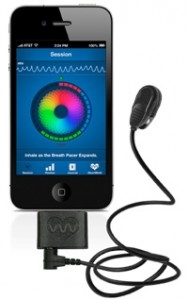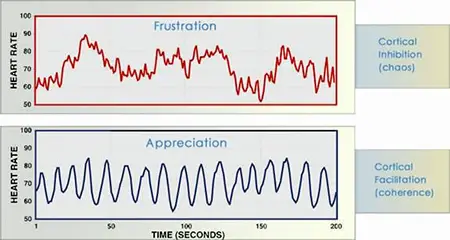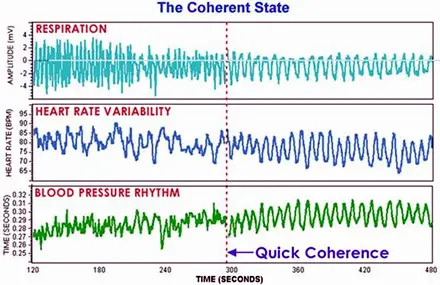By Deane Alban
Contributing Writer for Wake Up World
Biofeedback is a technique that can help you gain control of your body and your health. It lets you alter bodily functions that you normally don’t control, such as heart rate, brain activity and pain perception.[1]
Biofeedback may be used to improve health and performance, and the physiological changes related to thoughts, emotions and behavior.[2] Biofeedback has also been found to be effective for the treatment of headaches and migraines.[3][4]
Experiencing biofeedback used to mean working with a therapist, but with the latest technology, now you can do-it-yourself at home, or on the go.
Who Should Consider Biofeedback?
[pro_ad_display_adzone id=”110028″]
Biofeedback has successfully been used to treat numerous conditions. Anyone who suffers from the following conditions could benefit:
— ADHD
— Addictions
— Anxiety
— Arthritis
— Asthma
— Chronic pain
— Memory loss
— Migraine headaches
— High blood pressure
— Insomnia
— Stress
Biofeedback at Home
One of the big drawbacks to using biofeedback is that it can be expensive and time-consuming. A typical biofeedback session with a therapist involves you being attached to electrodes at his or her office. Sessions last about 30 minutes. Depending on your condition, you could need upwards of 20 sessions. Sessions are sometimes covered by insurance, but not always.
Now there are portable do-it-yourself devices available so you can get the benefits of biofeedback any time you want, for about the cost of one session with a therapist.
There are 3 basic kinds of do-it-yourself biofeedback options:
 First, there are handheld devices which are about the size of a cell phone. You don’t need to hook up electrodes to your head — you place your finger on a sensor or hook a clip to your ear. They are simple to use and you can experience immediate stress reduction wherever you are.
First, there are handheld devices which are about the size of a cell phone. You don’t need to hook up electrodes to your head — you place your finger on a sensor or hook a clip to your ear. They are simple to use and you can experience immediate stress reduction wherever you are.
Next, there are also computer software programs that require you to be at your computer to use. These are more complex to use but have more options and give you more information.
And the latest option is to get a biofeedback app that works with your smartphone, like HearthMath’s Inner Balance or the like.
How These Devices Work
Most at-home biofeedback devices work by measuring your heart rate variability (HRV) — naturally occurring fluctuation in heart beats. While we might think our hearts beat steadily like a metronome, it’s much more complex than that.
You’ve experienced changes in your HRV when your heart raced, skipped a beat, or fluttered from either upset or excitement.
Scientists and physicians consider HRV to be an important indicator of health, fitness, and biological age. It reflects your ability to adapt effectively to stress and life’s demands.
Emotional stress creates irregular heart rhythm patterns while positive emotions create a smooth wave, called a coherent heart rhythm pattern. You can see the difference in the heart rhythm patterns created by “frustration” and “appreciation” in the graphs below.
Personal biofeedback devices work on the concept of coherence — bringing together your heart rate variability, breathing patterns, and other body rhythms into synchronization — leading to optimal health and performance.
A biofeedback monitor will train you to achieve a state that looks like this:
Just like your car will ride better if your tires are properly aligned, your body will work more efficiently if all your systems are aligned. Makes sense!
Benefits of Coherence
Studies have shown that getting into a state of coherence can offer these benefits:
- Improved response to stress
- Clearer thinking
- Better decision making
- Improved health and well-being
- Boost in performance and overall intelligence
Ready to Try it?
Personal biofeedback devices are a great tool to have in your arsenal if you want to experience improved brain function and overall health and well-being.
If you’re ready to give biofeedback a try, but don’t know where to begin, I’ve investigated three of the most popular personal biofeedack devices — Wild Divine, StressEraser, and emWave2. Here are my thoughts on each in a nutshell.
Wild Divine is fairly complex, expensive, and borders on the mystical.
StressEraser is kind of cheap and doesn’t hold up. Many users on Amazon report their devices stopped working shortly after purchase.
My choice is the emWave2. It’s sleek, easy to use and effective. It’s recommended by health care professionals, and users claim it helped them achieve everything from enhanced well-being, deeper meditation, better sleep, and reduced hunger cravings to improved golf scores!
Updated August 2014
Previous articles by Deane:
- 5 Reasons You Aren’t Getting Enough Vitamin D.. and What You Can Do About It
- Five Common Food Additives That Can Damage Your Brain
- Food Scams and Myths: Why Quality Matters
- The Alarming Truth About Supermarket Meat
- 18 Choices You Make Every Day That Keep You Up at Night
- Can’t Get the Hang of Meditation? Try This Instead
- Is Your Olive Oil Lying About Its Virginity?
- Stress, Telomeres, and the Secret to Prevent Aging
- Zapped: Your Brain on Electromagnetic Fields (Infographic)
- 20 Common Medications That Can Cause Memory Loss
- 5 Common Food Additives That Are Toxic to Your Brain
- Coconut Oil Cures Alzheimer’s Disease: Truth or Wishful Thinking?
- 6 Common Habits that Rob You of Essential Brain Vitamins
- The ABCs of Vitamins for Memory and Brain Health
- Eat Your Way Smart With a Brain Food Diet
Deane Alban holds a bachelor’s degree in biology and has taught and written on a wide variety of natural health topics for over 20 years. Her current focus is helping people overcome brain fog, “senior moments”, and other signs of mental decline now, and preventing Alzheimer’s and dementia in the future.
The human brain is designed to last a lifetime, but modern life takes a greater toll on the brain than most people realize. Deane teaches the best ways to keep your brain healthy and stay mentally sharp for life at her website BeBrainFit.com.
[pro_ad_display_adzone id=”110027″]










